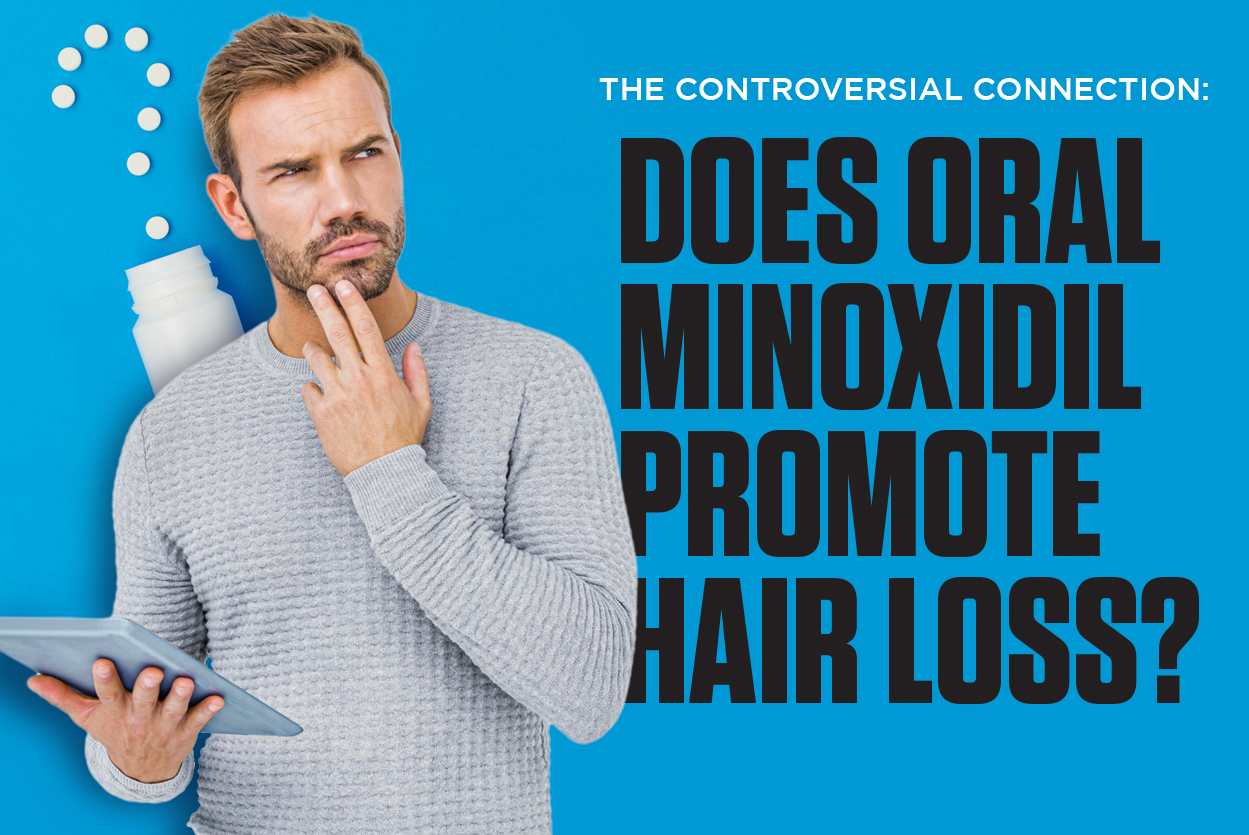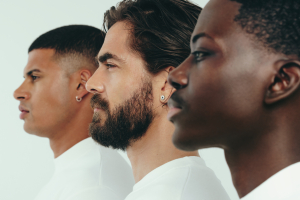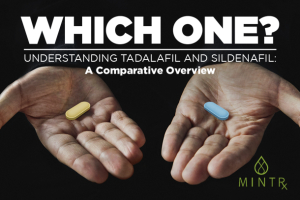
How Oral Minoxidil Works
Oral minoxidil, originally designed as an antihypertensive medication, has made an unexpected comeback as a powerful ally in the battle against hair loss. Unlike its topical counterpart, oral minoxidil unleashes its potential via systemic circulation, bringing unique advantages to those seeking hair regrowth. While the precise mechanisms underlying its effects may not be entirely elucidated, the role of oral minoxidil in promoting hair growth is gaining recognition, positioning it as a potential game-changer for individuals grappling with hair loss. What sets oral minoxidil apart is its ability to address hair loss from within your body. By facilitating improved blood flow and nourishment to hair follicles at a systemic level, it encourages the growth of new, healthy hair. This comprehensive approach to revitalizing your hair often results in stronger, more resilient strands. Unlike its topical counterpart, commonly marketed as Rogaine and primarily localized in its action, oral minoxidil's systemic influence opens up the possibility of promoting hair growth across various areas of the scalp. This holistic approach can be especially advantageous for individuals with diffuse hair thinning or those who may not have experienced the desired results from topical treatments. Though the FDA considers oral minoxidil's application for hair loss off-label, it is increasingly recognized as a viable option by medical professionals for its remarkable side effect of promoting hair growth. This makes it an appealing choice for individuals who may have explored other options or are seeking a more convenient and systemic solution to address their hair loss concerns.
Who Should Avoid Oral Minoxidil?
Understanding the suitability of oral minoxidil is important when embarking on your journey to hair revitalization. While oral minoxidil holds promise as a hair regrowth solution, it may not be the right choice for everyone. It's vital to be well-informed about who should exercise caution or consider alternatives. Minoxidil is typically not recommended for any patient with pheochromocytoma, renal failure, and any history of any cardiac disease (ie atrial fibrillation, heart attack, or heart failure).
Where Does Oral Minoxidil Grow Hair?
Minoxidil, whether applied topically or ingested orally, typically triggers hair growth in the vertex and crown regions of your head. However, its efficacy isn't limited to just these areas. The extent of hair regrowth varies from person to person, influenced by genetic factors, treatment duration, and individual responses to the medication. It's even possible for some individuals to witness hair growth in the frontal hairline or the temple areas, although these outcomes aren't guaranteed.
Is Minoxidil Hair Growth Permanent?
The positive news is that while minoxidil's impact isn't permanent, the newly grown hair typically remains as long as you consistently maintain your treatment regimen. This means that if you decide to discontinue the application or ingestion of minoxidil, the newly grown hair may gradually diminish, but it will revert to your baseline level of hair loss. Therefore, oral minoxidil entails a commitment, but it's one that offers encouraging results.
Does Minoxidil Cause Hair Loss?
Minoxidil is a topic of significant interest and debate in the world of hair loss treatments, with questions arising not only about its potential to promote hair growth but also about its paradoxical side effect - hair loss. While minoxidil is widely recognized for its effectiveness in stimulating hair regrowth, it's essential to address the concern that some individuals experience a transient increase in hair shedding during the initial stages of treatment. This phenomenon, often referred to as "shedding," can be perplexing and worrisome for those embarking on a minoxidil regimen. Shedding typically occurs in the early weeks or months of treatment and may give the impression that minoxidil is causing hair loss. However, it's crucial to understand that this shedding is often a sign that minoxidil is working as intended. The shedding phase is a natural part of the hair growth cycle. Minoxidil helps to rejuvenate hair follicles, which can lead to the shedding of weak or dormant hairs. This process is necessary to make way for the growth of thicker, healthier strands. In other words, it's a sign that your hair is cycling through its phases, preparing for new growth. It's important to differentiate this temporary shedding from long-term hair loss. While initial shedding can be disheartening, it's usually followed by a significant improvement in hair density as the new, stronger hair grows in. If you're concerned about shedding while using minoxidil, the MintRx team of online doctors can provide reassurance and support, helping you better understand the phases of hair growth and what to expect during your minoxidil journey. Minoxidil's impact on hair shedding is a normal part of the process, and understanding it can help individuals stay committed to their regimen, knowing that it's a positive sign of the journey towards hair rejuvenation.
Can Minoxidil Grow Hair on Bald Heads?
While minoxidil can be exceptionally effective in promoting hair growth for those with thinning hair or a receding hairline, its potential to regrow hair on completely bald heads is more limited. However, the treatment is far more likely to yield positive results in areas where hair follicles are still present, even if they are weakened.
Is Oral Minoxidil Safe?
Safety is a top priority when considering the use of oral minoxidil for hair growth, and it's important to emphasize that when used responsibly, this treatment can offer a promising path towards hair rejuvenation. Originally designed for hypertension, the off-label application of oral minoxidil in addressing hair loss has garnered attention. While it's important to acknowledge safety concerns, especially those related to blood pressure and cardiovascular health, particularly for individuals with pre-existing heart-related conditions or uncontrolled hypertension, these concerns may be managed effectively with the guidance and support of a healthcare professional. Embark on your hair growth journey with confidence, knowing that responsible use can unlock exciting opportunities for rejuvenating your hair.
The Path Forward with Oral Minoxidil
In summary, your journey into the realm of oral minoxidil as a potential solution for hair rejuvenation is one filled with promise. It offers an innovative and systemic approach to hair regrowth that can lead to stronger, healthier hair. This alternative, while off-label, is gaining recognition among medical professionals for its remarkable side effect of hair growth. It's an appealing option for those who may have encountered obstacles with other treatments or are seeking a more convenient way to address their hair loss concerns. Embrace this opportunity with confidence, and should you choose to embark on this journey, remember that your dedicated team of virtual physicians and pharmacists at MintRx are here to guide you every step of the way.





